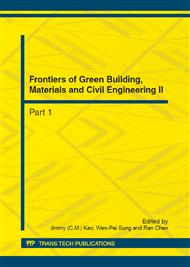p.964
p.970
p.976
p.980
p.984
p.989
p.995
p.1001
p.1005
Research on Applicability of Group Form Theory in Contemporary Urbanism: A Case Study of Hillside Terrace
Abstract:
In the rush for modernization, many of the Chinese cities are in the abrupt disappearance of character and identity of the unique places. Urban open space has lost its sense of place. This paper analyzes the applicability of group form theory within today’s dynamic environment by taking Maki’s Hillside Terrace complex as an example. The development of Hillside Terrace complex is resilient and adaptable to changes over time. It preserves the original spirit and character by creating urban open spaces for all kinds of human interaction. It provides inspiration for today's urban design.
Info:
Periodical:
Pages:
984-988
Citation:
Online since:
August 2012
Authors:
Keywords:
Price:
Сopyright:
© 2012 Trans Tech Publications Ltd. All Rights Reserved
Share:
Citation:


